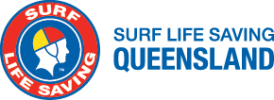This guideline establishes appropriate requirements for the provision of a defibrillator.
Training
If possible, all personnel required to use the defibrillator should be appropriately trained and qualified. However, public access defibrillators are available in many public locations.
Equipment
- All defibrillators should meet SLSA standards;
- Should include gloves, razor, shears, gauze swabs, spare battery (if applicable to AED), spare electrode pads, space blanket, pen and paper, chamois or towel, child pads (optional with a child lock key); and
- A set of child electrode pads should be included if applicable for the machine. However, adult pads may be used on a child if child pads are not available.
Start of Day Checks
- Check status indicator;
- Electrode pads are in date;
- All additional equipment as listed above is included and in operational condition.
Servicing
A qualified operator should closely check all equipment. The equipment should be serviced annually, preferably during non-peak times (winter months). Service personnel should also have:
• Adequate insurance to cover any claim made against them or their company in the event of their negligence causing injury to persons or damage to property. This is to indemnify SLSA;
• Be capable of obtaining the correct replacement parts for the units to keep defibrillator uniform;
• Be prepared to label and date such units as being serviced by the person;
• Be able to maintain a service register of equipment.
| Note: Clubs are directed to review the SLSA bulletins and policies for further information on SLSA Members Portal |



Post your comment on this topic.